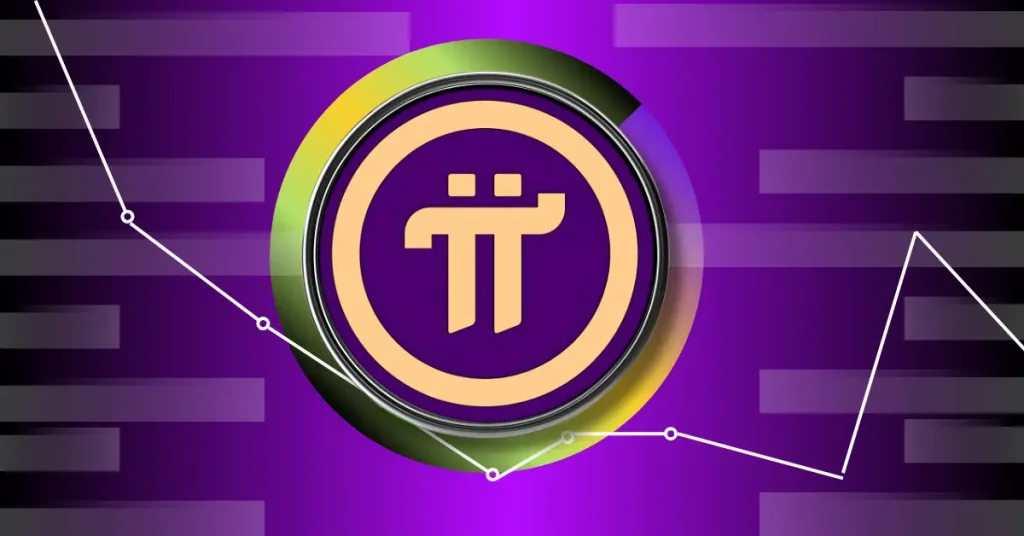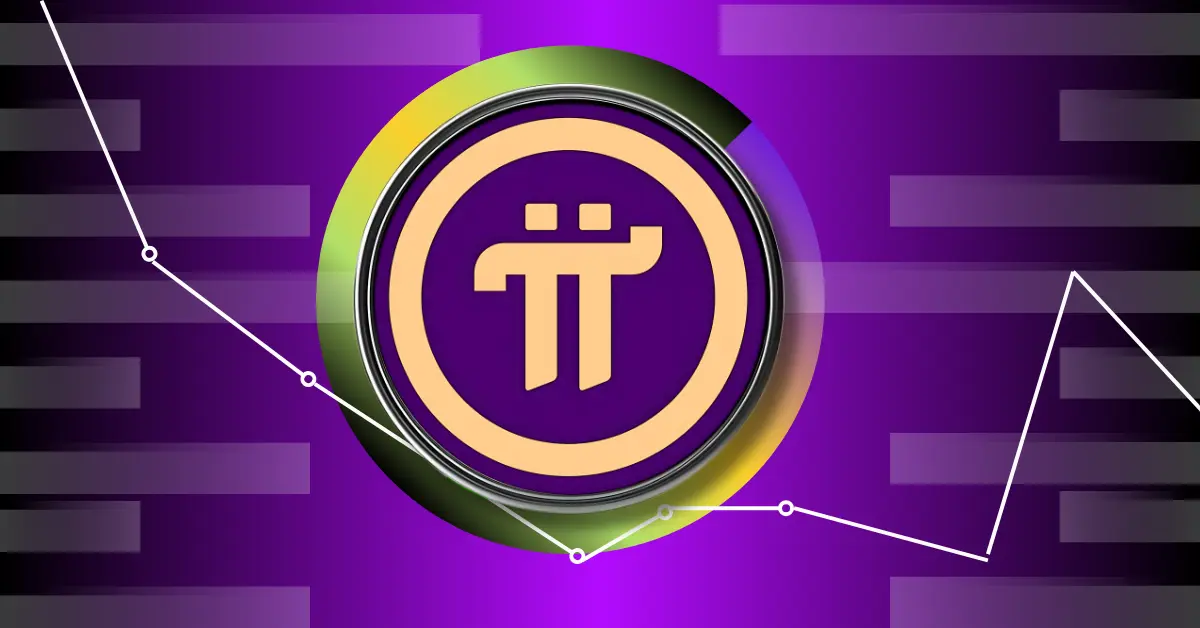
The Pi Network, once celebrated as a groundbreaking approach to cryptocurrency mining, is now facing a severe crisis that threatens its survival. Initially designed to offer an accessible entry point into the crypto world, Pi Network has encountered a series of challenges that have shaken investor confidence and raised questions about its long-term viability. From plummeting prices and skepticism to concerns about its underlying structure, Pi is navigating a turbulent period that could determine its future.
The Crashing Coin: A Cascade of Concerns
The most immediate and visible issue plaguing Pi Network is its dramatic price decline. The coin, which once reached an all-time high of $2.9950, has since plummeted to levels near $0.40, representing an over 85% crash. This significant drop has eroded investor value and confidence, casting doubt on the project’s sustainability.
Several factors contribute to this downward spiral. The most pressing concern is the upcoming release of 272 million Pi coins, valued at over $106 million. This influx of new tokens could flood the market, exacerbating selling pressure and pushing the price to new lows. The lack of a clear market capitalization and limited exchange support further compounds these issues, creating an environment of uncertainty that discourages new investment and encourages existing holders to sell.
Critics have also drawn parallels between Pi Network and multi-level marketing (MLM) schemes, questioning its decentralization and transparency. The project’s initial appeal was its ease of access—users could “mine” Pi coins simply by opening an app and pressing a button. While this approach attracted a large user base, it also diluted the perceived value of the coin, as it lacked the computational rigor associated with traditional mining methods like Bitcoin.
Hype vs. Substance: The Illusion of Value
The disconnect between Pi Network’s initial hype and its actual utility is a critical factor in its current predicament. The project promised easy access to cryptocurrency mining, but this accessibility came at the cost of tangible value. Unlike Bitcoin, which requires significant computational power to mine, Pi coins were acquired effortlessly, leading to skepticism about their long-term worth.
The success of Pi Network was initially driven by the promise of future value, contingent on the launch of its open network and subsequent listings on major exchanges like Binance. However, delays in these milestones have eroded investor confidence, leading many to question whether the project will ever deliver on its promises. The lack of real-world applications or a thriving internal economy further compounds the problem, as the value of Pi remains largely speculative and dependent on external factors like market sentiment and exchange listings.
The Core Team’s Conundrum: Steering Through the Storm
The Pi Core Team is under immense pressure to navigate the current crisis. Their actions will determine whether Pi Network can survive and potentially thrive or succumb to its challenges. One of the most pressing issues is managing the circulating supply, particularly the planned token unlocks, which pose a significant threat to price stability.
Token burning, as suggested by some analysts, could be a potential solution. By permanently removing a portion of the circulating supply, the Core Team could reduce selling pressure and stabilize the price. However, the scale of burning required to make a significant impact remains a subject of debate.
Beyond supply management, the Core Team must focus on building real-world utility for Pi coins. This could involve developing partnerships with businesses that accept Pi as payment, creating decentralized applications (dApps) that utilize Pi, or fostering a vibrant marketplace within the Pi Network ecosystem. By creating tangible value for Pi, the Core Team can reduce its reliance on speculation and build a more sustainable foundation for the project.
Transparency and communication are also crucial. The Core Team needs to address the concerns raised by investors and critics, providing clear and honest updates on the project’s progress, challenges, and future plans. Open communication can help rebuild trust and restore confidence in the project’s long-term viability.
The Road Ahead: A Fork in the Path
The future of Pi Network is uncertain, with several potential scenarios possible. In the most optimistic scenario, the Pi Core Team successfully implements strategies to address the project’s challenges. They manage the token unlocks effectively, build real-world utility for Pi coins, and restore investor confidence through transparent communication. Key milestones, such as the open network launch and exchange listings, are achieved, driving increased adoption and price appreciation.
In a less favorable scenario, the Pi Network fails to gain significant traction. The Core Team struggles to build real-world utility, and the token unlocks lead to sustained price declines. Investor interest wanes, and the network slowly fades into obscurity.
In the worst-case scenario, the Pi Network collapses under the weight of its challenges. The token unlocks trigger a massive sell-off, driving the price to near zero. The project loses all credibility, and the network collapses, leaving investors with worthless coins.
The path that Pi Network ultimately takes will depend on a complex interplay of factors, including the Core Team’s actions, market sentiment, and the overall trajectory of the cryptocurrency industry.
Conclusion: A Cautionary Tale
The story of Pi Network serves as a cautionary tale in the volatile world of cryptocurrency. It highlights the importance of substance over hype, the need for transparency and sound economics, and the risks associated with speculative investments. While the future of Pi remains uncertain, its current predicament underscores the challenges faced by new cryptocurrencies seeking to disrupt the established order. Whether Pi can overcome these challenges and achieve its original vision remains to be seen, but its journey offers valuable lessons for investors and developers alike. The potential rewards of cryptocurrency innovation are undeniable, but as Pi Network vividly demonstrates, so are the risks.





